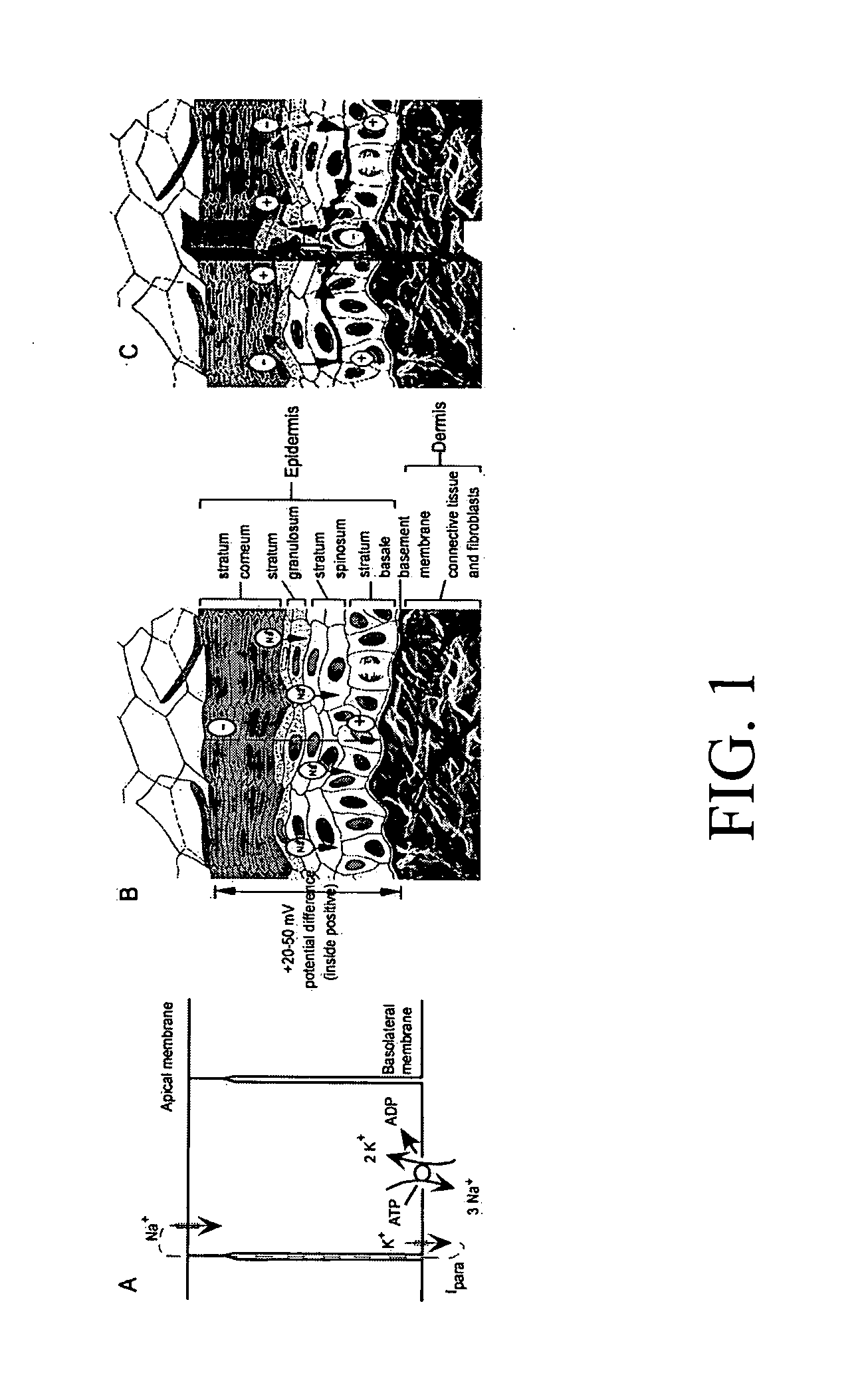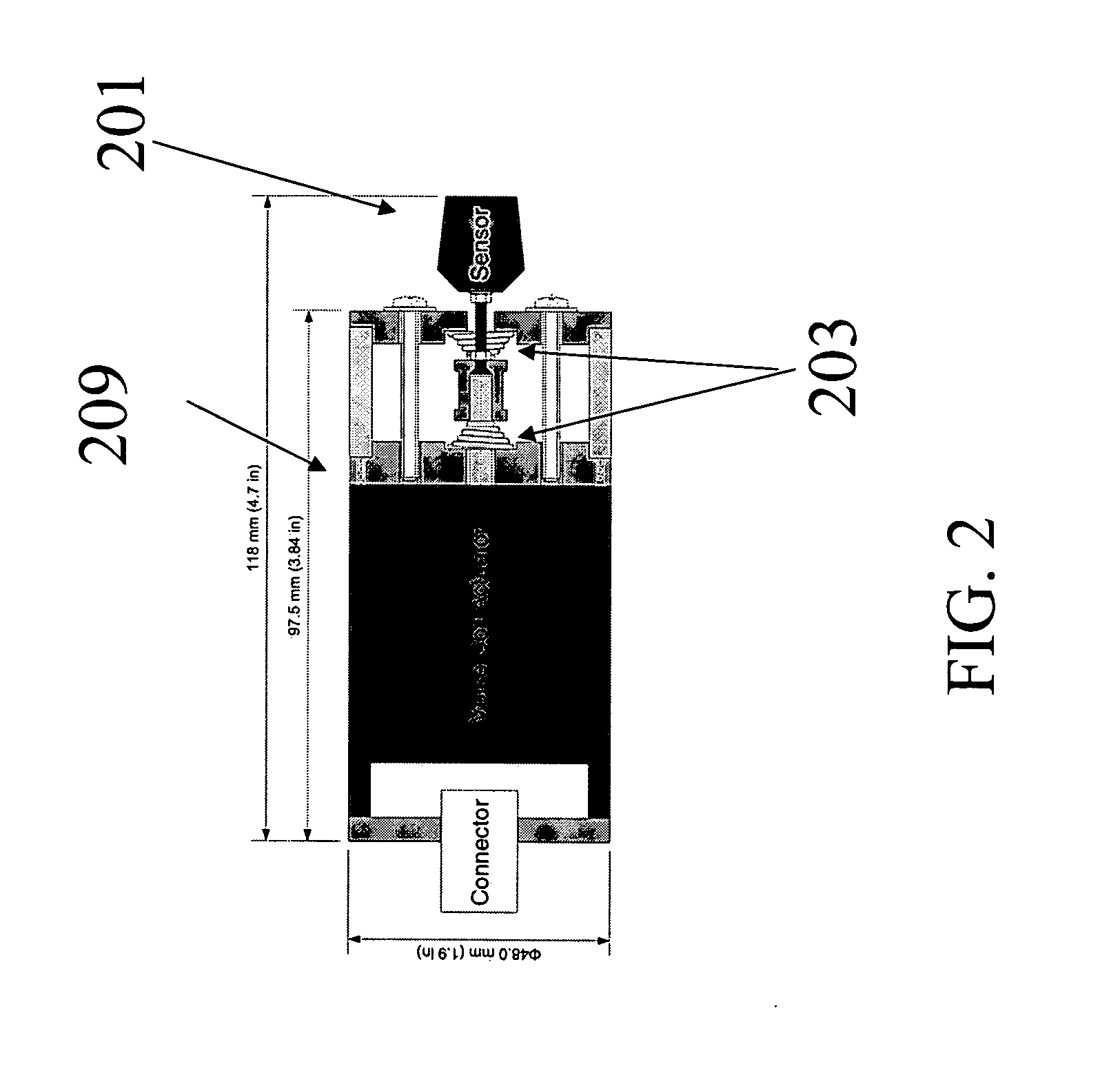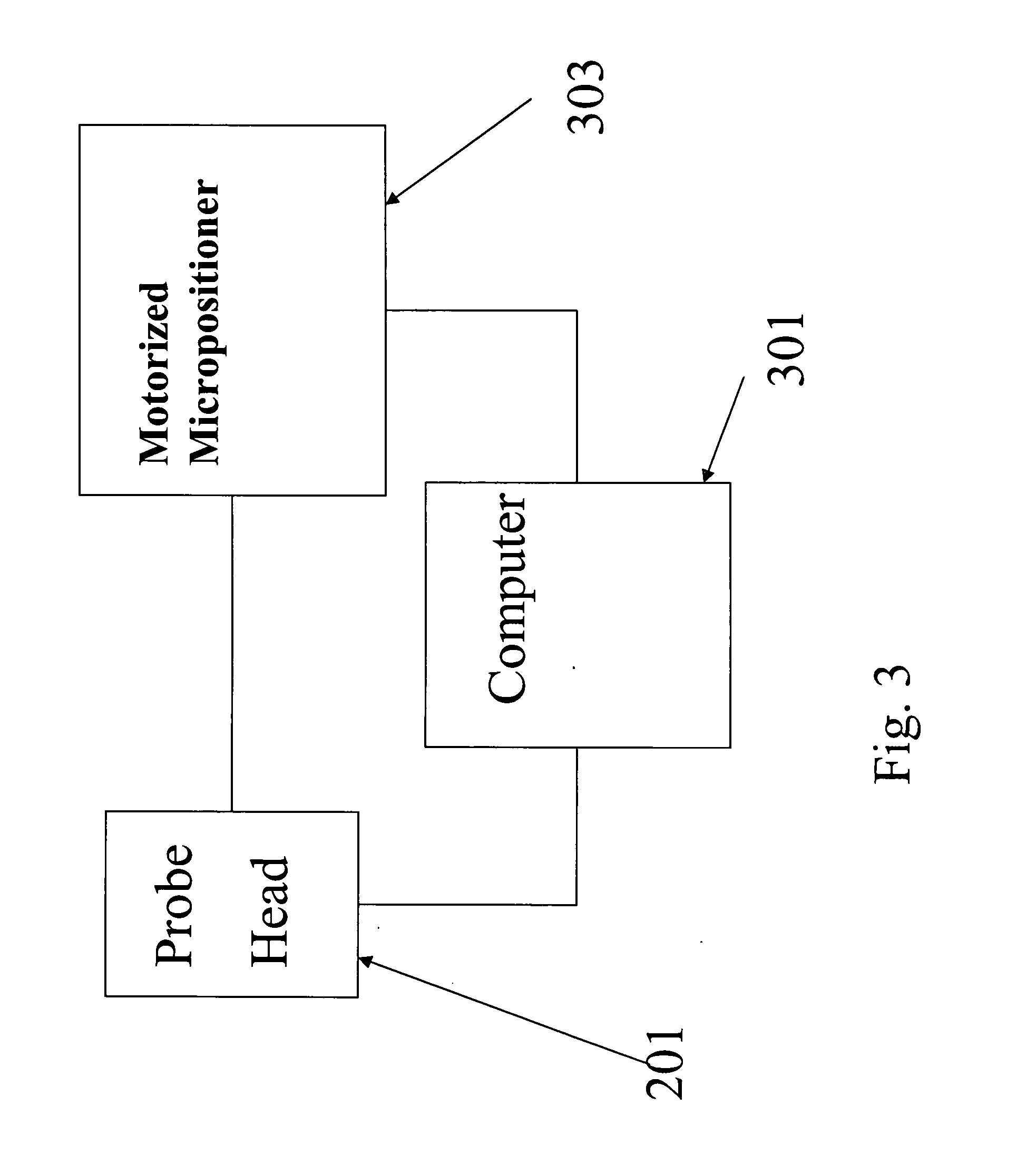Application of the kelvin probe technique to mammalian skin and other epithelial structures
a technology of kelvin probe and mammalian skin, applied in the field of application of kelvin probe to mammalian skin and other epithelial structures, can solve the problems of increasing the risk of procedure, no consistent methodology established for the use of electric fields in the treatment of wounds, and limited standard techniques for determining this information
- Summary
- Abstract
- Description
- Claims
- Application Information
AI Technical Summary
Benefits of technology
Problems solved by technology
Method used
Image
Examples
Embodiment Construction
[0048]FIG. 2 depicts the probe vibrator and head that is used in one embodiment of the present invention. Probe head 201 is comprised of one or many small metal plates that each have a surface area of 0.2 mm2, but a different size can be used and still be within the scope of the present invention. Each plate is connected to a low noise current-to-voltage (I / V) converter housed within the probe head 201 and a copper shield held at the reference potential surrounds the entire head. The vibrator unit 209 is designed to move the probe head along a single axis that is perpendicular to the surface of the skin or epithelia under study. This can be achieved with many types of vibrators based on piezoelectric, magnetostrictive or electromagnetic transducers. One embodiment of the present invention is composed of an cylinder that is 1.9″ in diameter and 4.7″ long and contains an electromagnetic transducer or voice coil actuator, commercially available from BEI Kimco. This suspension system us...
PUM
 Login to View More
Login to View More Abstract
Description
Claims
Application Information
 Login to View More
Login to View More - R&D
- Intellectual Property
- Life Sciences
- Materials
- Tech Scout
- Unparalleled Data Quality
- Higher Quality Content
- 60% Fewer Hallucinations
Browse by: Latest US Patents, China's latest patents, Technical Efficacy Thesaurus, Application Domain, Technology Topic, Popular Technical Reports.
© 2025 PatSnap. All rights reserved.Legal|Privacy policy|Modern Slavery Act Transparency Statement|Sitemap|About US| Contact US: help@patsnap.com



